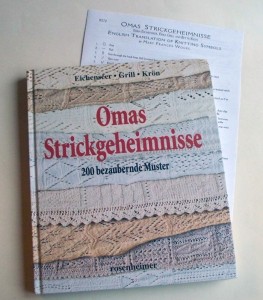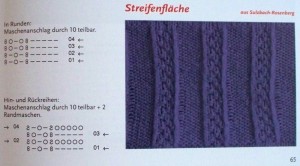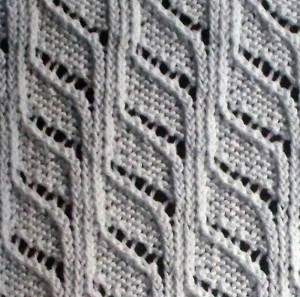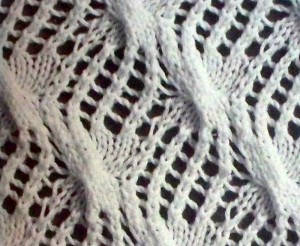I’m a sucker for stitch dictionaries. That’s why I had to get this:
Omas has been on my wish list for a long time. It’s in German, and I don’t read German – shoot, I can’t even pronounce the book’s title – but, as you can see above, Lacis distributes the book with an English translation of its key.
Good thing, too. IMHO, some of the symbols are downright weird – like, who thought of “O” for “knit”? If it were up to me, “O” would stand for “yarn over,” as it looks like the eyelet created by a yarn over. Sure, sure, the symbols in Omas are probably common in Germany – they seem to be the same as the ones in Maria Erlbacher’s books – and would be familiar to German knitters. But they strike me as weird.
Stranger still: most of the patterns are presented with two charts, one for knitting in the round and another for knitting flat:
For the wrong-side rows of the flat-knitting charts, the symbols match the stitches as worked, not as viewed on the right side of the fabric. Very few books published in the US do this (I can think of only one, and it shall remain nameless). Why is this strange? Because it messes up the visual correspondence between chart and knitted fabric. Expanses of reverse stockinette, for example, translate into something that looks like garter stitch in a chart. Not cool.
Fortunately, if a pattern is presented with just one chart, it’s an in-the-round chart. If I squint and tilt my head and try real hard, I can get past the weird symbols and see the resemblance between these in-the-round charts and the swatch photos. Still, when I want to use one of these charts, I figure I’ll redraw it first using my preferred symbols. It’ll be time well spent. I’ll become familiar with the pattern, and I’ll lessen the likelihood of goofing up as I knit. And, you know, I’ll avoid all that squinting.
And someday I am likely to use some of these stitch patterns, or at least elements of them. Wouldn’t a variation on this theme make for great socks?
Lots of patterns make use of multiple adjacent yarn overs to create dramatic lace, or to create three-dimensional “poufs”:
What could you see using this for?








